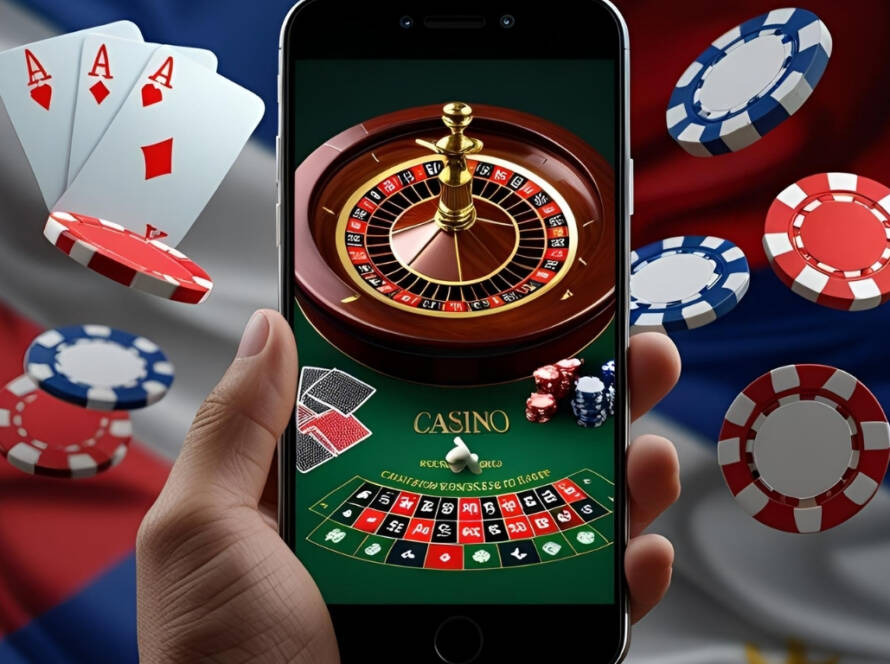Few industries have adapted to the digital age with the speed or fluidity of gambling. Something that was once only experienced in the velvet and neon of physical spaces, the casino has now become an omnipresent digital phenomenon. One that no longer requires a tuxedo, or even a desk. A laptop or a phone will do.
This shift, slow at first, has now rapidly transformed how gambling is accessed. And also how it is experienced. Online casinos, born in the shadow of the mid-1990s, have since evolved into a global industry, powered by the internet and a new form of frictionless, always-on entertainment.
It is a story as much about technology as it is about experiences.
Origins in the Digital Periphery
The early 1990s marked a tentative convergence of computing power, legal loopholes, and entrepreneurial risk. In 1994, the Caribbean nation of Antigua and Barbuda passed legislation allowing online gambling operations to be licensed legally, a regulatory moment that would soon prove consequential.
That same year, software company Microgaming developed what would become the first functional online casino platform. Cryptologic, another early player, pioneered secure financial transactions. Together, these innovations laid the groundwork for the first digital gambling sites, primitive by any modern standard, but conceptually radical.
By the end of the decade, hundreds of sites had emerged. They offered rudimentary versions of slots, blackjack, and roulette, often presented through clunky interfaces and slow-loading graphics. These were not environments of glamour or immersion, but of utility. What they offered was gambling that could exist beyond geography.
The Internet Matures
As internet infrastructure improved, so did the ambition of online casinos. The early 2000s saw significant growth in the quality of platforms. Poker became a particularly important driver, buoyed by televised tournaments and the “Moneymaker effect,” which suggested that anyone, with the right strategy and access, could succeed.
Technology played a central role. Developers like Playtech and EvenBet introduced more sophisticated game engines and real-time multiplayer functionality. What had begun as a browser-based experiment evolved into a competitive ecosystem of virtual poker rooms, themed slots, and interactive betting environments.
By mid-decade, online casinos were no longer defined by their novelty. They had become infrastructure-regulated, monetized, and increasingly professional.
The Mobility Advantage
The rise of smartphones changed everything. As mobile internet access became the default in much of the world, online casinos adapted. Where once gambling required a desktop, now it required only a screen and a swipe.
Importantly, the user experience became more integrated. Games were optimized for smaller displays, load times decreased, and interfaces became more tactile and intuitive. In markets like Southeast Asia, where mobile-first cultures had taken root, these developments were not luxuries, they were baseline expectations.
This transition marked a psychological shift as well. Gambling, no longer a discrete activity, became ambient. A game could be played in line at a café, between meetings, or during a commute. The casino, in effect, had entered the rhythms of daily life.
Return of the Human Element
The digitization of casinos had its drawbacks, most notably, the absence of atmosphere. In response, operators introduced live dealer games. These streamed real human dealers from physical studios, often in real time, and reintroduced elements of social play and visual trust.
It was a compelling hybrid. Users could place bets from their phones but see cards dealt by actual hands. The format bridged the gap between simulation and authenticity, and quickly became one of the most popular segments of the online casino world.
More than novelty, this was a recalibration, a recognition that even in digital space, users crave human cues: eye contact, motion, unpredictability.
Data and Personalization
Underneath the increasingly polished interfaces, a quieter revolution was taking place. Online casinos were becoming intelligent.
With every click, wager, and pause, platforms collected behavioral data (consentually). This was used to inform everything from game recommendations to promotional offers. Machine learning systems identified patterns in play, preferences, risk tolerance, session length, and adapted in real time.
This personalization extended beyond content. Players encountered interfaces tailored to their habits, bonuses aligned with their frequency, and reminders designed to increase retention. The experience of gambling was no longer just digital; it was algorithmically individual.
Innovation, Risk, and Responsibility
In parallel, newer technologies particularly blockchain and cryptocurrency began to enter the ecosystem. For some platforms, accepting Bitcoin or Ethereum became a way to offer fast, low-friction transactions. For others, blockchain infrastructure allowed for greater transparency in game fairness and payout verification.
But with innovation came greater scrutiny. The ease of access, the constant availability, and the depth of behavioral tracking raised questions about addiction, regulation, and ethical design. In response, many platforms now include responsible gambling tools: session limits, deposit caps, and real-time alerts. Whether these features are sufficient or sufficiently used; remains an open question.
Looking Forward
The trajectory of online casinos suggests neither stasis nor saturation. New developments are already visible on the horizon; fully immersive virtual environments, AI-driven game logic, and increasingly blurred lines between gambling, gaming, and social interaction.
Online casinos have become more than a digital imitation of its physical counterpart. It is its own category shaped by speed, access, and the infrastructure of modern life. In this sense, the evolution of online casinos mirrors broader cultural shifts towards personalization, mobility, and the constant negotiation between convenience and control. Gambling has always adapted to its environment. Today, that environment is a digital one and it is still changing.


